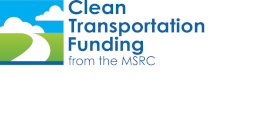In mid-September, the MSRC and members of the Technical Advisory Committee held a retreat to gather new perspectives in the motor vehicle arena to help them kick off the development process for the 2014-2016 Work Program. Attendees heard from officials at the state and regional levels about their activities and priorities and how the MSRC can help achieve their objectives. Additionally, experts from the automotive arena gave their perspectives on where the market has been and where it is going in the future.
Tim Olson, the Energy and Fuels Program Manager at the California Energy Commission, discussed the CEC’s transportation energy activities, and policy and market activities, including the Integrated Energy Policy Report, and incentive funding through AB 118/AB 8 (the Air Quality Improvement Program) and the cap and trade program. The CEC has seen certain trends in fuel consumption since 2008 including a decline in gasoline use as a result of the rescission and because new engines must meet higher fuel economy standards, while diesel demand is increasing because of the lower price.
The CEC awards millions of dollars each year for alternative fuels and infrastructure projects but, according to Tim, demand is about five times the amount of funding that is available. He noted that this is where cap and trade funding could help. It is estimated that $2 to $3 billion will be generated by the cap and trade program when fuels come under the cap on January 1. He said that we are about half-way where we need to be to reach the state’s 2020 emission reduction goal, but reaching the 2050 goal is more daunting so more dramatic actions likely will need to be taken. He concluded by saying that the CEC is interested in collaborating with the MSRC on how to leverage each agency’s funds better to help accelerate the actions needed to reach our 2020 and 2050 goals.
John O’Dell, Senior Editor for Edmunds.com, served as the retreat’s Keynote speaker and gave an overview of where the light-duty passenger vehicle market is headed in the next few years. He explained that plug-in hybrid sales have increased by 39 percent, while conventional hybrid vehicles have stalled because there are are not a lot of new options on the market and because there is more interest now in plug-ins. Incentives have been a huge help in getting alternative fuel vehicles into consumers’ hands and will continue to play an important role. He said that what drives consumers’ concern in purchasing a vehicle is convenience and price, not green ideals. The biggest issue in growing the alternative fuel vehicle market is fueling infrastructure - this gets to the convenience issue. If there are not enough charging stations or if the stations are constantly occupied, this will hinder sales. He urged that if the market wants the use of alternative fuel vehicles scaled up, then the infrastructure needs to be over scaled in order to meet the convenience factor for consumers.
MSRC member and ARB Air Resources Engineer Early Withycombe provided the agency’s perspective on projects the MSRC and ARB could work together to fund including on-road medium- and heavy duty truck fleets, on-road bus fleets, and on-road light-duty vehicle fleets. Dean Saito, a member of the MSRC-TAC and the Manager of the On-Road Mobile Source Division at SCAQMD, gave an update on the SCAQMD’s activities and priorities for the upcoming year and suggested that the MSRC could leverage its funds with cap and trade funding. He also recommended that MSRC funding be used to assist the region’s efforts to attain federal air quality standards, as well as for early deployment of advanced mobile source technologies.The retreat’s last guest speaker was Levi Tillemann-Dick (pictured above), a Fellow at New America and expert on the global auto industry. He discussed how the United States’, and more specifically California’s, policies on alternative fuel vehicles drove innovation in other counties, especially Japan and China. However, their motivations were different - in California, the driving force behind EV policy was pursing clean air, while in Japan and China it was industrial competiveness because they wanted to leapfrog over the West. Currently, we are about tied with Japan in EV sales, and China is far behind but still is committed to EV sales. He believes California can continue to lead the world in the automotive industry for alternative fuel vehicles by installing on-street and multi-unit charging stations and by making infrastructure EV-ready (for example, New York City recently passed an ordinance that 20 percent of new parking spaces must be EV-ready). These types of activities will continue to grow the EV market.
The day concluded with a presentation by the MSRC’s Outreach Coordinator who provided a detailed summary of the six Work Program workshops that were held over the summer to gather stakeholder input on programs they would like to see funding available for in the upcoming funding cycle.
Retreat participants were given a wealth of information to help them develop the next Work Program, which will have approximately $44 million in funding available. The final slate of Work Program categories should be completed by early 2015 at the latest, with the first round of solicitations scheduled to be released in the months following.
